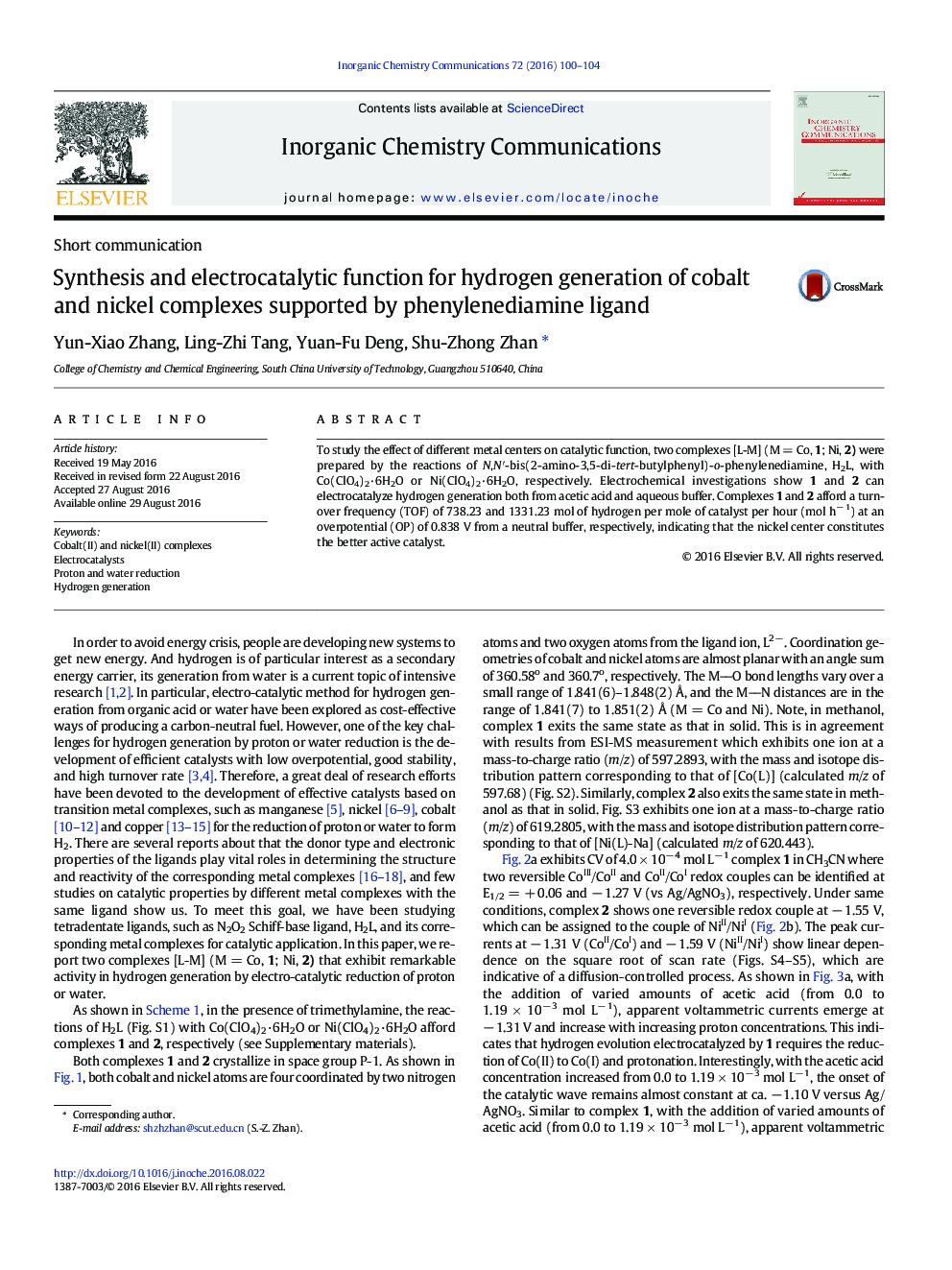| کد مقاله | کد نشریه | سال انتشار | مقاله انگلیسی | نسخه تمام متن |
|---|---|---|---|---|
| 1301613 | 1498918 | 2016 | 5 صفحه PDF | دانلود رایگان |
• Reactions of H2L, with Co(ClO4)2 or Ni(ClO4)2 affords two complexes [L-M] (M = Co, 1; Ni, 2).
• 1 and 2 electrocatalyze H2 generation from CH3COOH and H2O.
• The nickel center constitutes the better active catalyst.
To study the effect of different metal centers on catalytic function, two complexes [L-M] (M = Co, 1; Ni, 2) were prepared by the reactions of N,N′-bis(2-amino-3,5-di-tert-butylphenyl)-o-phenylenediamine, H2L, with Co(ClO4)2·6H2O or Ni(ClO4)2·6H2O, respectively. Electrochemical investigations show 1 and 2 can electrocatalyze hydrogen generation both from acetic acid and aqueous buffer. Complexes 1 and 2 afford a turnover frequency (TOF) of 738.23 and 1331.23 mol of hydrogen per mole of catalyst per hour (mol h− 1) at an overpotential (OP) of 0.838 V from a neutral buffer, respectively, indicating that the nickel center constitutes the better active catalyst.
Reactions of N,N′-bis(2-amino-3,5-di-tert-butylphenyl)-o-phenylenediamine, H2L, with Co(ClO4)2·6H2O or Ni(ClO4)2·6H2O affords two complexes [L-M] (M = Co, 1; Ni, 2), which can electrocatalyze hydrogen generation both from acetic acid and aqueous buffer solution.Figure optionsDownload as PowerPoint slide
Journal: Inorganic Chemistry Communications - Volume 72, October 2016, Pages 100–104
